
Hybrid work
The fluid workplace
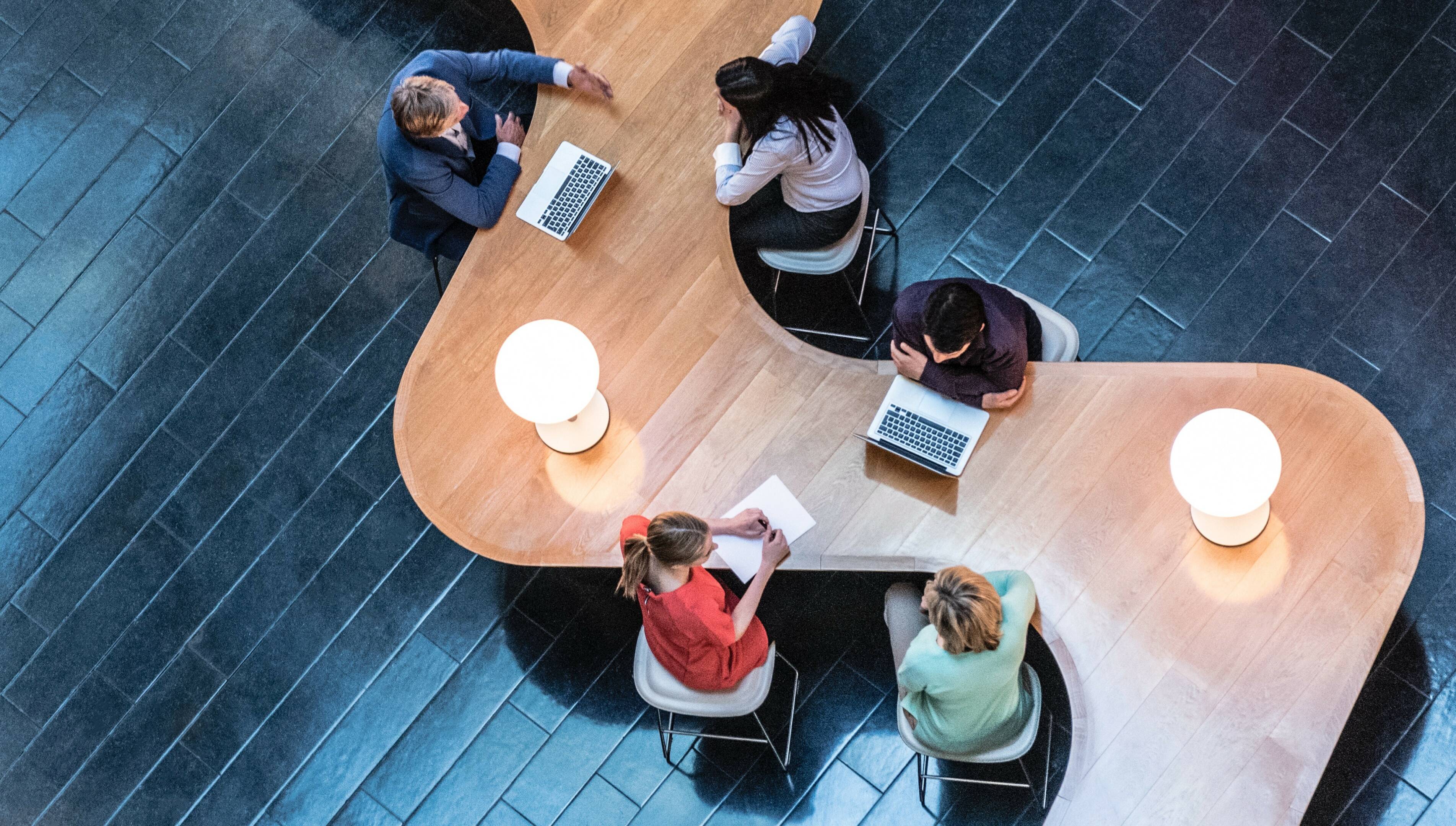
How to arrange hybrid work in the way that best matches how we think – that is the challenge according to Elke Geraerts in her book ‘The mental reset’. The new standard is what you produce, not when you are available.
Elke Geraerts thinks we should be bold enough to reset with a clean slate. “What it boils down to now is perfecting hybrid work,” she says. “Remote work automatically drives us to be too available. That’s because we want to prove that we really are working.” But anyone who needs time to focus on getting a certain job done ends up being constantly interrupted. That remains inordinately unproductive. Those constant distractions guzzle up energy.
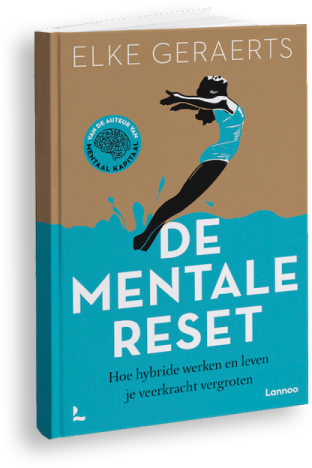
At Proximus, the workplace is a constantly evolving concept, but the past two years have seen exceptional change. “Covid encouraged us to take bigger steps faster, and to reinvent the workplace.”
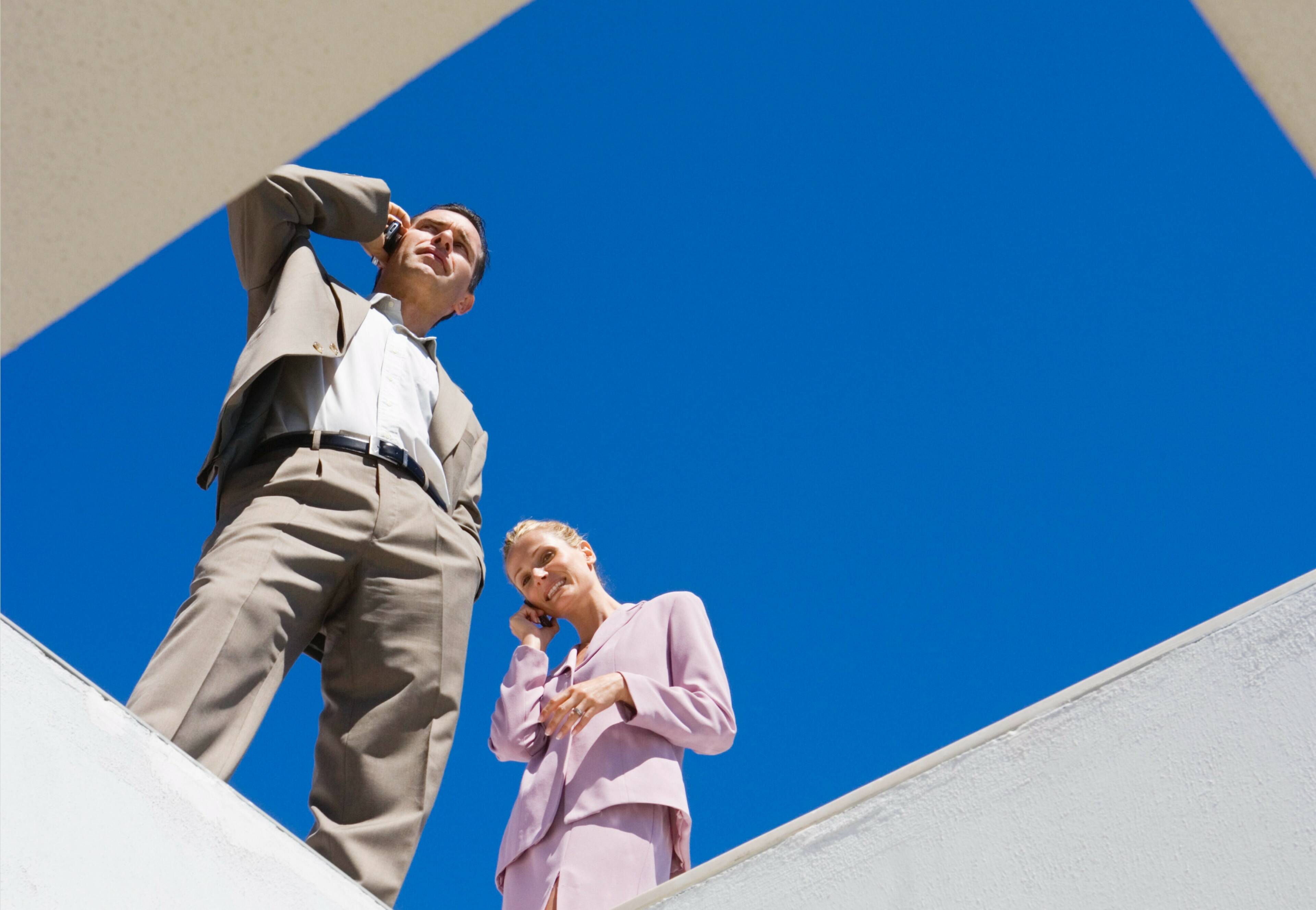
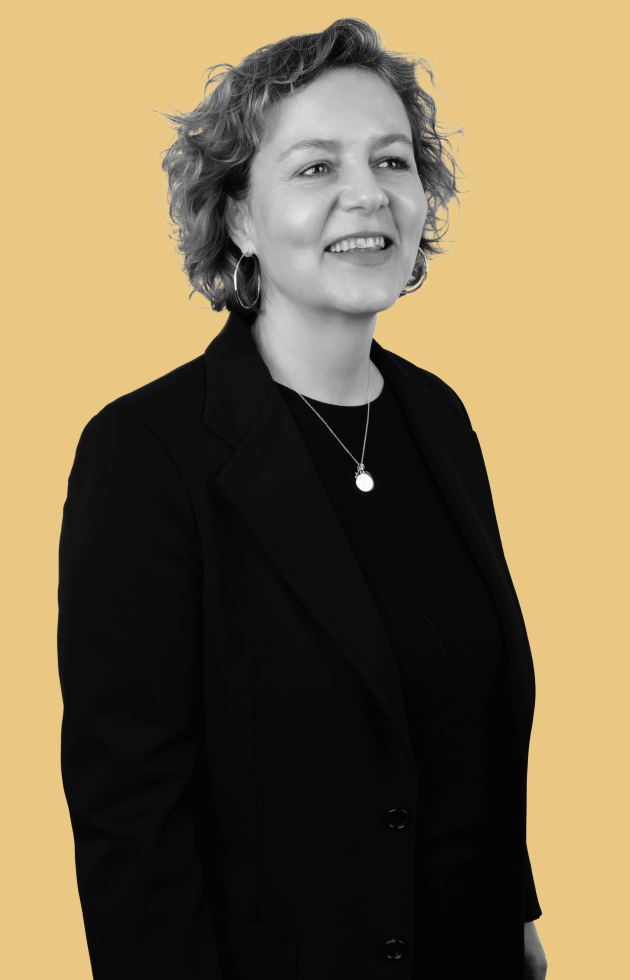
Margaret Denis
has 25 years of experience at Proximus and has been Director of Workspace Transformation since 2021.

Margaret Denis, Director Workplace Transformation
“The physical workplace – the building – shapes itself around the employee, not the other way around.”
With its Campus program, Proximus is completely redesigning the workplace. “Our approach is based on three pillars,” says Margaret Denis, Director Workspace Transformation at Proximus. “First and foremost, employees have the ability to choose where, when, and how they work.” This allows us to work in a way that not only matches the content of the job, but also the employee’s personality and personal circumstances. “The second pillar is that of human connection. Creativity happens when people meet.”
Environmental and social impact together form the third pillar of the program. “We are resolutely choosing a new and different use of our office buildings,” Margaret explains. “An office that’s virtually empty on Fridays because everyone chooses to work from home that day? That is not what we want.” The Proximus towers in Brussels are the showcase for co-creation, an essential element of the Campus program. “The towers are growing into our inspiring, digital campus in Brussels, as well as forming a fluid ecosystem of workplaces with our regional offices, employees’ home offices, and workplaces at partners and customers.”
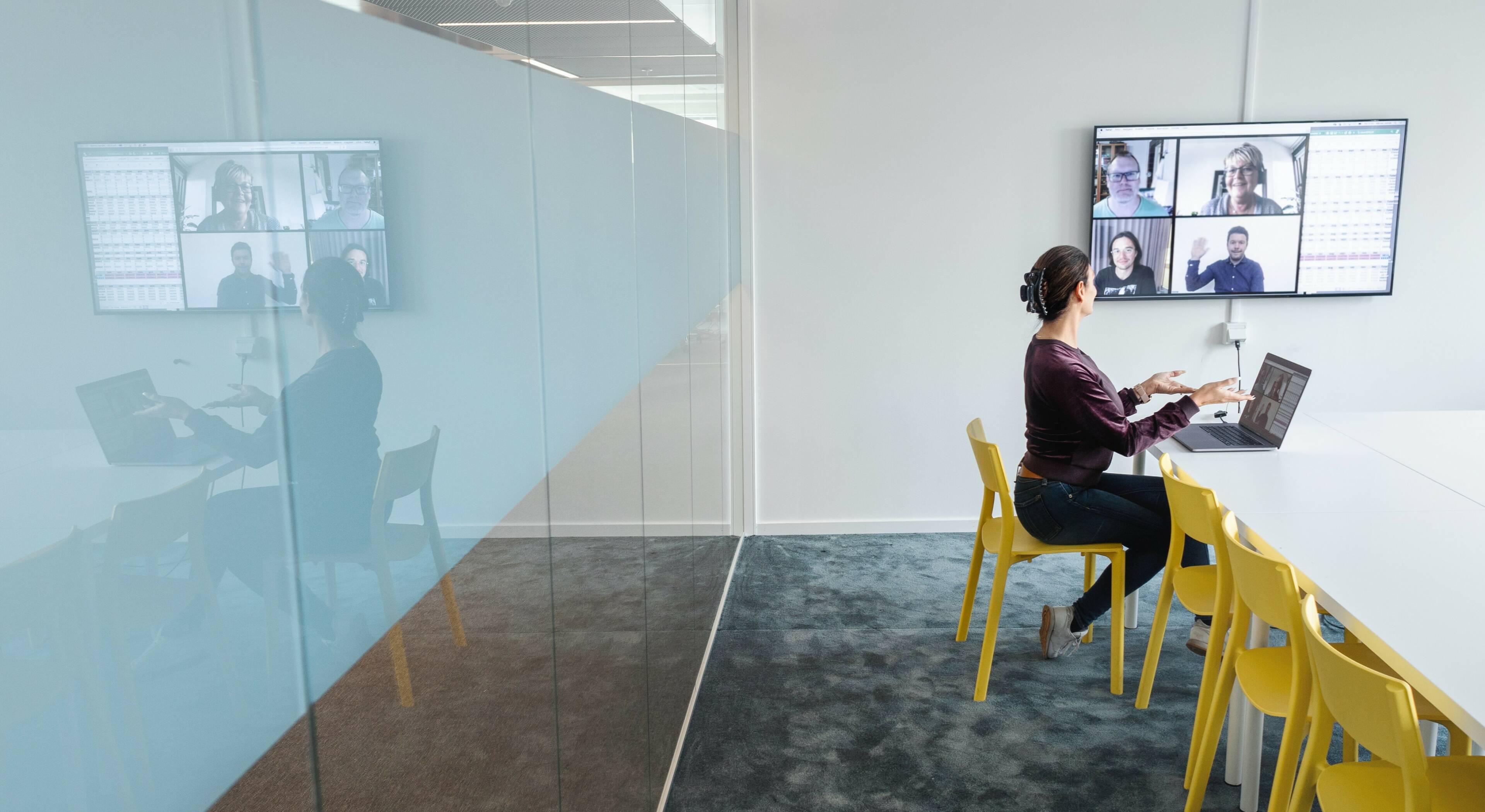
Elke Geraerts
holds a PhD in psychology and is CEO of the "Better Minds at Work" HR consultancy. Geraerts challenges people and businesses to optimize their lifestyles and ways of working in her latest book, The Mental Reset.
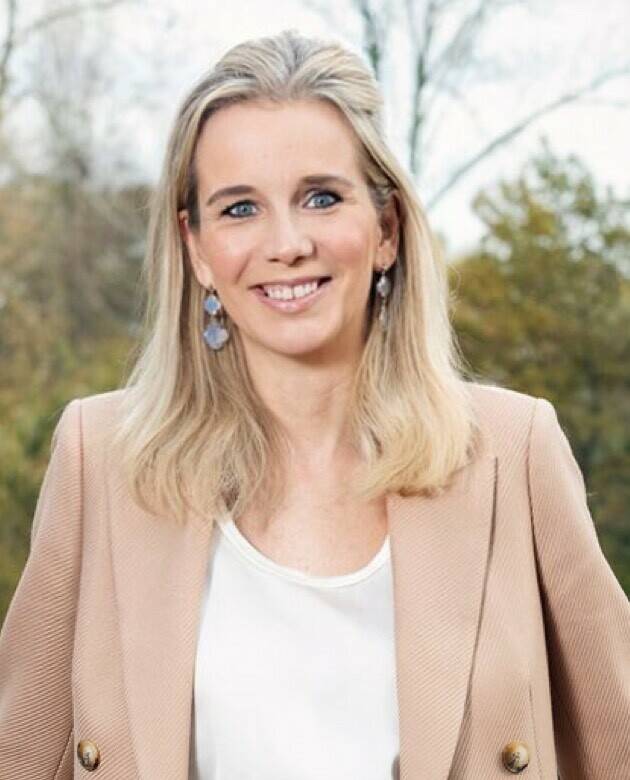
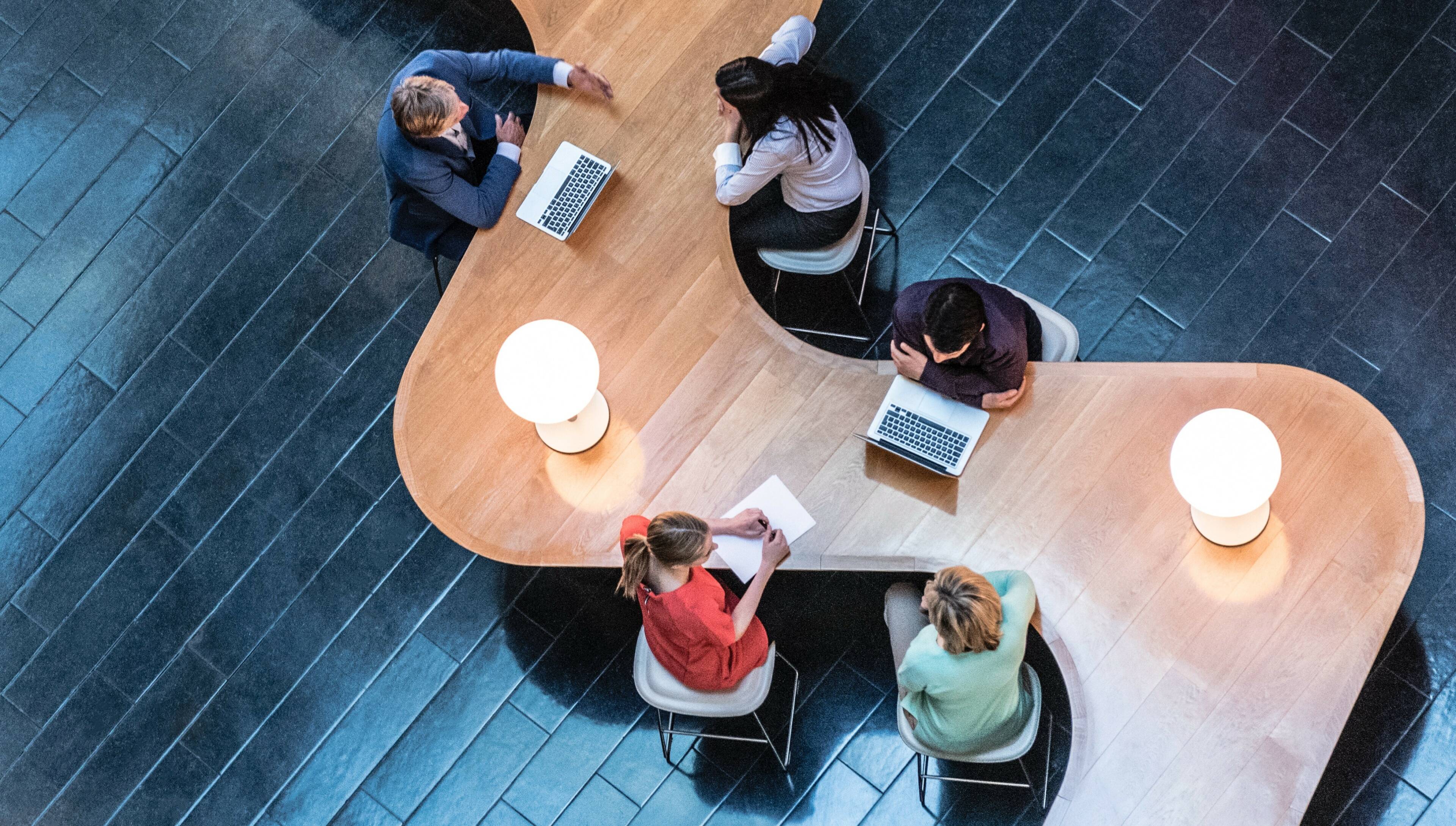
Facilitate hybrid work
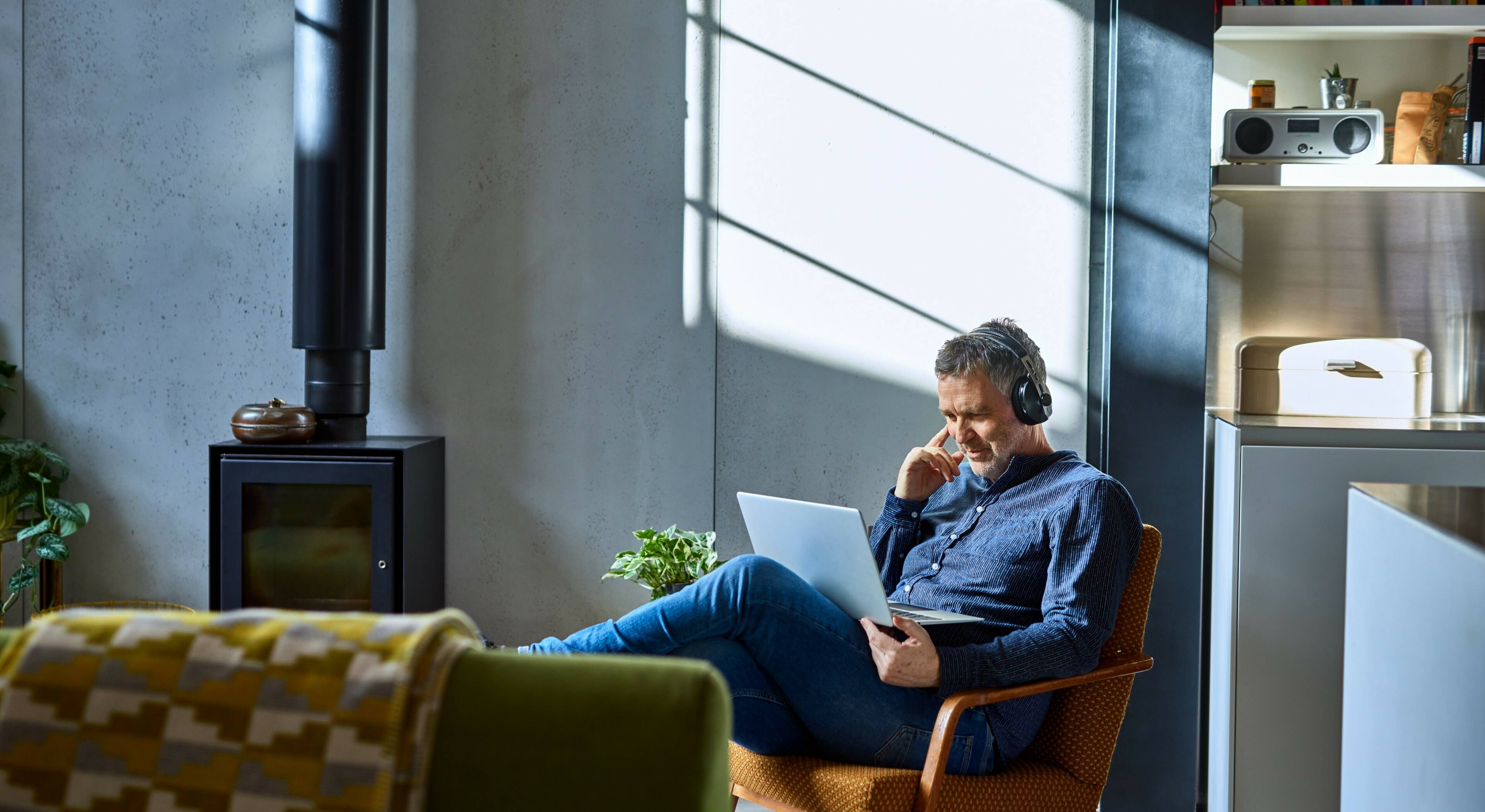
Find out more
Hybrid working implies changes in mobility. Proximus chose the Flexible Mobility Budget to stimulate multimodality.
“We are taking a fluid approach. One size fits all no longer works. It makes sense, because no two employees are alike.”
Margaret Denis,
Director Workplace Transformation

Over the next few years, the Campus program will become more concrete. “In addition to reviewing physical workplaces in various areas, the importance of technology and employee mindset, we are also looking at virtual workplaces and what we can do for non-office employees. HR guidelines are also evolving constantly. The importance of co-creation and change management certainly must not be forgotten as a part of this,” says Margaret. “This journey to reinvent the workplace within five years is something we are going through gradually with all employees so that we can deliver added value for everyone.”
“In our new approach, we aim for an average occupancy rate of 80% for each workstation,” says Margaret. “We can use technology to measure this and, based on that data, continuously optimize our types of workplaces. If that figure falls, for example, we can let start-ups or research teams use the available workstations. We might also rent workstations to other companies. We have a concept of Space-as-a-Service where we want to provide specific workspaces - think of our streaming room.”
The new interpretation of work and workplace requires a different mindset. Again, technology is an important tool for supporting the new approach. Proximus is developing an intelligent app for this. The app will guide the employee around the building and, for example, to the right workplace, according to a planned activity. This should allow us to make the best use of a building while strengthening the connection between employees.
After a long period of mandated working from home, Proximus is opting for an HR policy that gives the flexibility of up to three days of homeworking per week. For the remaining office days, employees are free to choose the location. “That approach will continue to evolve,” says Margaret. “We are moving towards a fluid system, where the division between office work and homeworking depends on your concrete assignment as well as your personal circumstances. One size fits all does not offer a solution for this. The evolution is still ongoing, obviously in close consultation with the social partners.”
Important in this regard is that there will be more flexibility when adjusting to the personal preferences of the employee. “That makes sense, because no two employees are alike.” Working from home is then still a personal choice, albeit always in consultation with the team and management. Those conversations are necessary. That, too, is part of the evolution, agreeing with the team when and why they come to the office.” The same goes for the practical division between office work and homeworking. “When everyone is working from home at the same time, our buildings are empty.”
At its core, the Campus program is designed to create a new, flexible ecosystem. “It is crucial that employees feel good,” says Margaret. “The physical workplace – the building – shapes itself around the employee, not the other way around.” For example, co-creation is very important to us, not only between our various departments but also with customers and partners. That is why we are invested in an agile way of working together.”
For other types of work, employees will be able to go to the headquarters in Brussels, but we also encourage them to use regional offices more. “We focus more on individual work there, but always within an environment where you can easily connect and collaborate with colleagues or partners.” There, too, the buildings will be redesigned to meet the needs of the different types of activities. “The choice of workplaces is in continuous development in co-creation with our employees based on seven different profiles. These profiles are based on some typical aspects of work: number of interactions, complexity of those interactions, profiles inside the team or outside, mobility in a building or outside, etc.”

“We need to do a better job of attuning our work to how our minds work. That should be the starting-point.” However, it’s obvious that redesigning our approach to work is not an in-between-activities sort of thing. “Stress and burnout happen when people can’t keep up anymore. And that’s exactly the situation we've got to stay on top of. That’s HR's biggest challenge now: a new approach with meaningful work for all, so that we can rediscover what we enjoy about work. In the end, that remains the best antidote to burnout.”
Job satisfaction – the best remedy for burnout
Flexible time and space
Hybrid work's flexibility is not just limited to where you work either. It is also about time-related flexibility. “The workplace isn’t necessarily what makes truly focused work possible, but when you work is. When things need to get done quickly, then you have to work synchronously, i.e., at the same time as your colleagues. But the flexibility of hybrid work also means you can work asynchronously on other assignments. Are you scheduled for a creative project on your team? Then you’re better off doing it face to face.”
Valérie vermeire
began her career in Finance and Internal Audit. For the past nine years, she has focused on strategy, reward and human resources technology at Proximus.
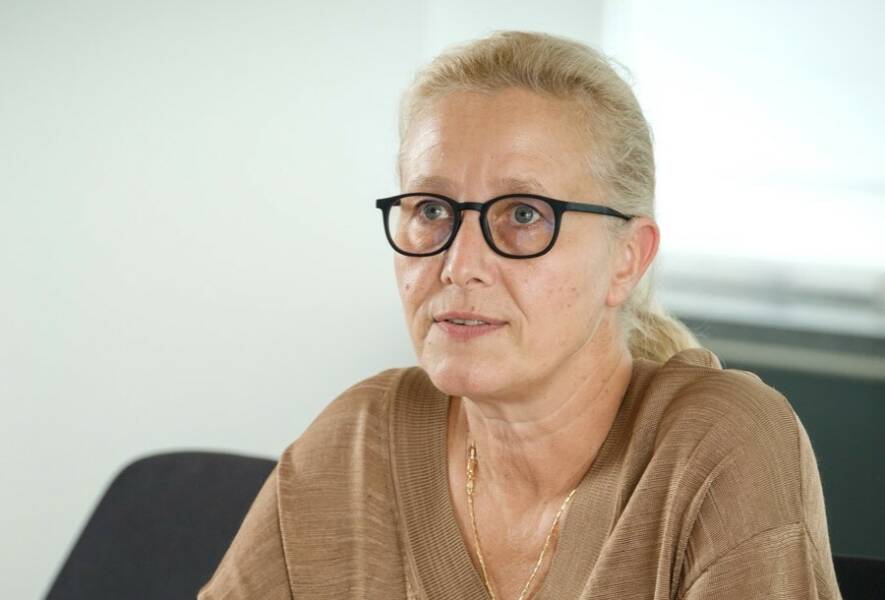
The HR strategy supports the #Inspire 2022 global strategy. It remains for the company to find its "new normal": to determine which tasks or meetings specifically require a physical presence in the workplace. There is no need to go to the office to spend the day in a videoconference, with headphones clamped to your ears. “Hence our Campus workplace redevelopment project, which also aims to enrich the experience through even more connection, collaboration and innovation. In short, giving meaning to work in the office when you go there less often,” announces Véronique Messiaen, HR Manager.
When to travel and why?
Véronique messian
moved to the Proximus' Group Human Resources department to develop strategic projects after a ten-year career in the Strategy department.

Acceleration, digitization, opportunities and flexibility. The new normal in HR departments?
Only a very small number of tasks now seem impervious to remote working. “We would never have imagined that call-center work could be done at home. However, the nature of the function is, by definition, very autonomous. Ditto for key accounts: it is now possible for the customer to make a digital appointment with their contact. It saves everyone time."
“It’s about discovering where your limits are, when you’ve gone too far and when you have to recover."
Stijn Bogaerts
IoT Solution Manager at Proximus and founder of MoNoA
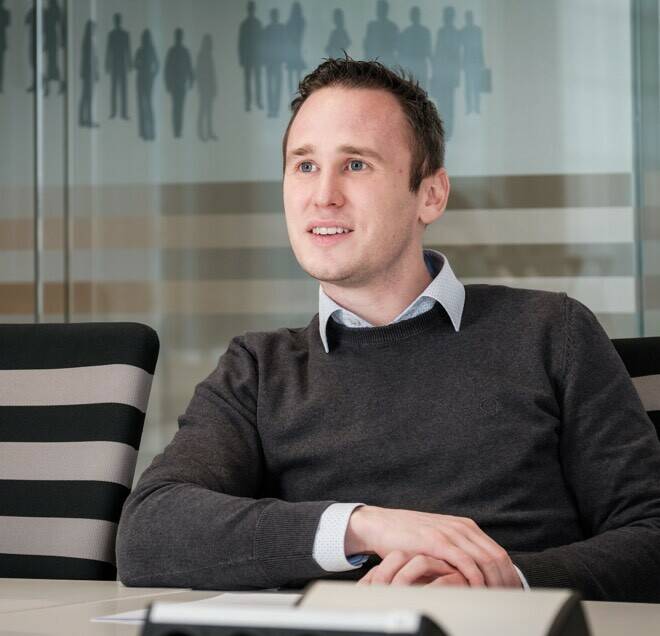
Reinforcing links with fellow workers remotely and, above all, striking a better work/life balance are two challenges facing employees working from home in which new tools can help, for example, in learning how to recognize peaks in stress.
Working from home often proves a challenge in terms of work/life balance. “We’ve developed the ‘work smarter’ charter for that”, said Sabine De Brauwer, prevention adviser for psychosocial aspects at Proximus. “When working from home, you’re advised to incorporate rituals to start and conclude your working day.” In practice, employees are often found to take on more work at home than they do at the office, for example by working on into the evening. In the long run this means you lose the balance. “We provide tips on how our staff should best organize their schedule and deal with tools when working from home.”
One new tool with which Proximus has started up a pilot project is MoNoA, a wearable enabling targeted stress-level mapping and offering specific steps for stress reduction. “I’m the kind of employee who carries on working and would therefore surpass his own limits”, says Stijn Bogaerts, IoT Solution Manager at Proximus and founder of MoNoA. “I looked for a solution to make those limits visible.” A fitness tracker takes someone’s sporting activity as a starting-point. For work situations that approach didn’t appear the most suitable, so MoNoA takes the person himself as a point of departure. "It’s about discovering where your limits are, when you’ve gone too far and when you have to recover,” Stijn explained. MoNoA works with a small wearable placed under your wristwatch.
The fluid workplace
Hybrid work

Facilitate hybrid work
At Proximus, the workplace is a constantly evolving concept, but the past two years have seen exceptional change. “Covid encouraged us to take bigger steps faster, and to reinvent the workplace.”
With its Campus program, Proximus is completely redesigning the workplace. “Our approach is based on three pillars,” says Margaret Denis, Director Workspace Transformation at Proximus. “First and foremost, employees have the ability to choose where, when, and how they work.” This allows us to work in a way that not only matches the content of the job, but also the employee’s personality and personal circumstances. “The second pillar is that of human connection. Creativity happens when people meet.”
Environmental and social impact together form the third pillar of the program. “We are resolutely choosing a new and different use of our office buildings,” Margaret explains. “An office that’s virtually empty on Fridays because everyone chooses to work from home that day? That is not what we want.” The Proximus towers in Brussels are the showcase for co-creation, an essential element of the Campus program. “The towers are growing into our inspiring, digital campus in Brussels, as well as forming a fluid ecosystem of workplaces with our regional offices, employees’ home offices, and workplaces at partners and customers.”

Margaret Denis
has 25 years of experience at Proximus and has been Director of Workspace Transformation since 2021.
At its core, the Campus program is designed to create a new, flexible ecosystem. “It is crucial that employees feel good,” says Margaret. “The physical workplace – the building – shapes itself around the employee, not the other way around.” For example, co-creation is very important to us, not only between our various departments but also with customers and partners. That is why we are invested in an agile way of working together.”
For other types of work, employees will be able to go to the headquarters in Brussels, but we also encourage them to use regional offices more. “We focus more on individual work there, but always within an environment where you can easily connect and collaborate with colleagues or partners.” There, too, the buildings will be redesigned to meet the needs of the different types of activities. “The choice of workplaces is in continuous development in co-creation with our employees based on seven different profiles. These profiles are based on some typical aspects of work: number of interactions, complexity of those interactions, profiles inside the team or outside, mobility in a building or outside, etc.”
After a long period of mandated working from home, Proximus is opting for an HR policy that gives the flexibility of up to three days of homeworking per week. For the remaining office days, employees are free to choose the location. “That approach will continue to evolve,” says Margaret. “We are moving towards a fluid system, where the division between office work and homeworking depends on your concrete assignment as well as your personal circumstances. One size fits all does not offer a solution for this. The evolution is still ongoing, obviously in close consultation with the social partners.”
Important in this regard is that there will be more flexibility when adjusting to the personal preferences of the employee. “That makes sense, because no two employees are alike.” Working from home is then still a personal choice, albeit always in consultation with the team and management. Those conversations are necessary. That, too, is part of the evolution, agreeing with the team when and why they come to the office.” The same goes for the practical division between office work and homeworking. “When everyone is working from home at the same time, our buildings are empty.”
Margaret Denis, Director Workplace Transformation
“The physical workplace – the building – shapes itself around the employee, not the other way around.”
“In our new approach, we aim for an average occupancy rate of 80% for each workstation,” says Margaret. “We can use technology to measure this and, based on that data, continuously optimize our types of workplaces. If that figure falls, for example, we can let start-ups or research teams use the available workstations. We might also rent workstations to other companies. We have a concept of Space-as-a-Service where we want to provide specific workspaces - think of our streaming room.”
The new interpretation of work and workplace requires a different mindset. Again, technology is an important tool for supporting the new approach. Proximus is developing an intelligent app for this. The app will guide the employee around the building and, for example, to the right workplace, according to a planned activity. This should allow us to make the best use of a building while strengthening the connection between employees.
“We are taking a fluid approach. One size fits all no longer works. It makes sense, because no two employees are alike.”
Margaret Denis,
Director Workplace Transformation

Over the next few years, the Campus program will become more concrete. “In addition to reviewing physical workplaces in various areas, the importance of technology and employee mindset, we are also looking at virtual workplaces and what we can do for non-office employees. HR guidelines are also evolving constantly. The importance of co-creation and change management certainly must not be forgotten as a part of this,” says Margaret. “This journey to reinvent the workplace within five years is something we are going through gradually with all employees so that we can deliver added value for everyone.”

Véronique messian
moved to the Proximus' Group Human Resources department to develop strategic projects after a ten-year career in the Strategy department.
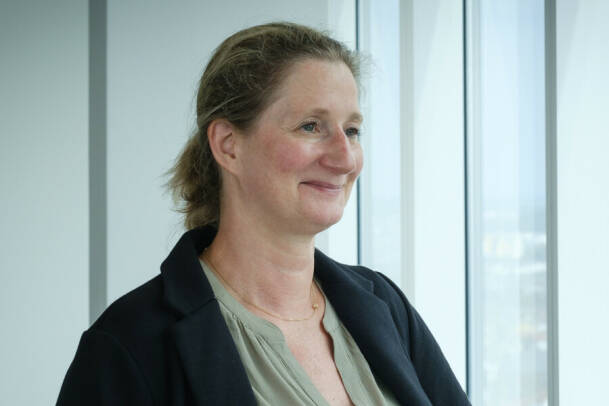
Acceleration, digitization, opportunities and flexibility. The new normal in HR departments?
Only a very small number of tasks now seem impervious to remote working. “We would never have imagined that call-center work could be done at home. However, the nature of the function is, by definition, very autonomous. Ditto for key accounts: it is now possible for the customer to make a digital appointment with their contact. It saves everyone time."
Valérie vermeire
began her career in Finance and Internal Audit. For the past nine years, she has focused on strategy, reward and human resources technology at Proximus.
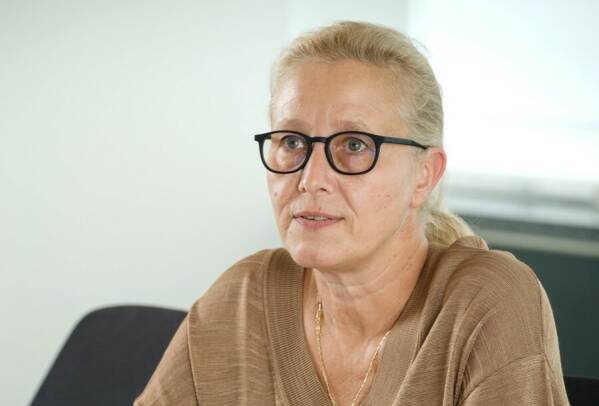
The HR strategy supports the #Inspire 2022 global strategy. It remains for the company to find its "new normal": to determine which tasks or meetings specifically require a physical presence in the workplace. There is no need to go to the office to spend the day in a videoconference, with headphones clamped to your ears. “Hence our Campus workplace redevelopment project, which also aims to enrich the experience through even more connection, collaboration and innovation. In short, giving meaning to work in the office when you go there less often,” announces Véronique Messiaen, HR Manager.
When to travel and why?

Find out more
Hybrid working implies changes in mobility. Proximus chose the Flexible Mobility Budget to stimulate multimodality.
How to arrange hybrid work in the way that best matches how we think – that is the challenge according to Elke Geraerts in her book ‘The mental reset’. The new standard is what you produce, not when you are available.
Elke Geraerts thinks we should be bold enough to reset with a clean slate. “What it boils down to now is perfecting hybrid work,” she says. “Remote work automatically drives us to be too available. That’s because we want to prove that we really are working.” But anyone who needs time to focus on getting a certain job done ends up being constantly interrupted. That remains inordinately unproductive. Those constant distractions guzzle up energy.
Flexible time and space
Hybrid work's flexibility is not just limited to where you work either. It is also about time-related flexibility. “The workplace isn’t necessarily what makes truly focused work possible, but when you work is. When things need to get done quickly, then you have to work synchronously, i.e., at the same time as your colleagues. But the flexibility of hybrid work also means you can work asynchronously on other assignments. Are you scheduled for a creative project on your team? Then you’re better off doing it face to face.”

“We need to do a better job of attuning our work to how our minds work. That should be the starting-point.” However, it’s obvious that redesigning our approach to work is not an in-between-activities sort of thing. “Stress and burnout happen when people can’t keep up anymore. And that’s exactly the situation we've got to stay on top of. That’s HR's biggest challenge now: a new approach with meaningful work for all, so that we can rediscover what we enjoy about work. In the end, that remains the best antidote to burnout.”
Job satisfaction – the best remedy for burnout

Elke Geraerts
holds a PhD in psychology and is CEO of the "Better Minds at Work" HR consultancy. Geraerts challenges people and businesses to optimize their lifestyles and ways of working in her latest book, The Mental Reset.
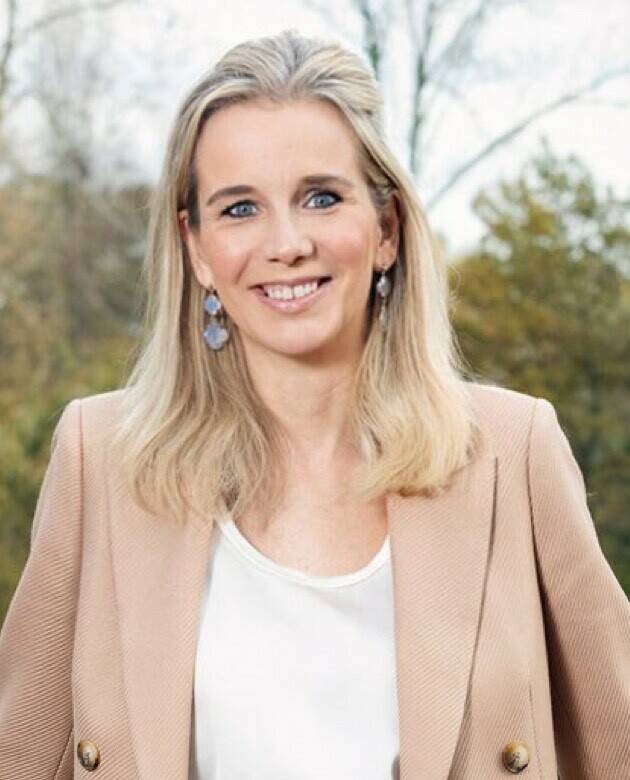

Reinforcing links with fellow workers remotely and, above all, striking a better work/life balance are two challenges facing employees working from home in which new tools can help, for example, in learning how to recognize peaks in stress.
Working from home often proves a challenge in terms of work/life balance. “We’ve developed the ‘work smarter’ charter for that”, said Sabine De Brauwer, prevention adviser for psychosocial aspects at Proximus. “When working from home, you’re advised to incorporate rituals to start and conclude your working day.” In practice, employees are often found to take on more work at home than they do at the office, for example by working on into the evening. In the long run this means you lose the balance. “We provide tips on how our staff should best organize their schedule and deal with tools when working from home.”
One new tool with which Proximus has started up a pilot project is MoNoA, a wearable enabling targeted stress-level mapping and offering specific steps for stress reduction. “I’m the kind of employee who carries on working and would therefore surpass his own limits”, says Stijn Bogaerts, IoT Solution Manager at Proximus and founder of MoNoA. “I looked for a solution to make those limits visible.” A fitness tracker takes someone’s sporting activity as a starting-point. For work situations that approach didn’t appear the most suitable, so MoNoA takes the person himself as a point of departure. "It’s about discovering where your limits are, when you’ve gone too far and when you have to recover,” Stijn explained. MoNoA works with a small wearable placed under your wristwatch.

“It’s about discovering where your limits are, when you’ve gone too far and when you have to recover."
Stijn Bogaerts
IoT Solution Manager at Proximus and founder of MoNoA
